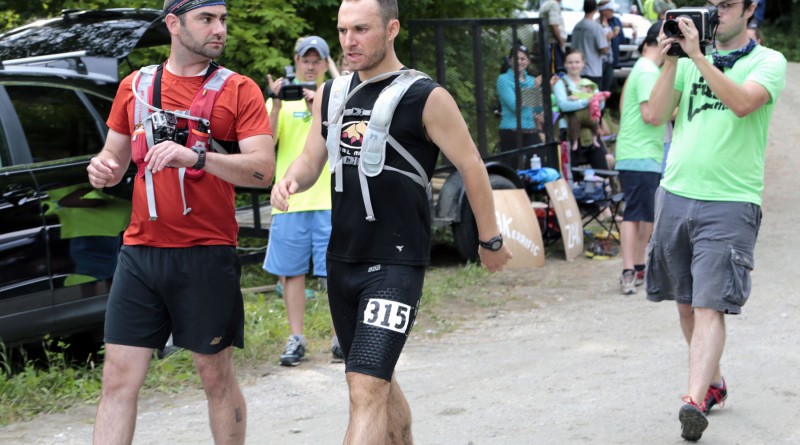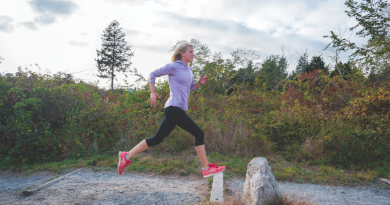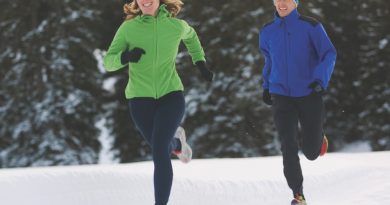Vermont 100: New documentary tells a tale
West Windsor — The film “100: Head/Heart/Feet” starts in a barn in central Vermont, a checkpoint on Vermont’s 100-mile cross-country race. With a little more than 10 miles remaining, runners straggle in, one wearier than the next. Inside, medical staff check runners’ weight, monitor their mental state and offer them food and drink.
Zak Wieluns – bib number 315 – stumbles into the barn.
“I smell terrible,” he says deliriously to his coach and crew chief. “The downs [downhills] are killing me.”
“Don’t worry about the downs,” the coach replies, kneading Wieluns’ calves. Then he adds: “Oh my God, you do smell.”
So begins the documentary “100 Head/Heart/Feet,” a film that takes as its focus Zak Wieluns, age 35, of Portland, Me., as he prepares for his third attempt at the Vermont 100.
Documenting Wieluns’ journey are two friends, Will Peters and Mike Mooney, a two-man team that comprise Hammer & Saw Productions.
Wieluns’ first run of more than a few miles wasn’t until his freshman year at Colby Sawyer College in New London, N.H. when he was trying to impress the girl that would years later become his wife. Not being in very good shape, he seriously underestimated the six-mile run but still made a valiant effort.
His college buddy, Mike Mooney, was there and still remembers the occasion.
“I laughed a lot,” he recalls.
But Wieluns stuck with running – and the girl. After graduating from Colby Sawyer in 2002 he ran his first marathon with his wife shortly after they moved to Slovakia in 2003. He finished in over five hours – not a very satisfying finish, he says. But while writing his master’s thesis in European history, he took breaks to go on longer runs. He returned to the U.S. five years later as a long-distance runner.
His first race longer than a marathon was a 50k near Gloucester, Me. in 2009. When he finished, he knew he had found a sport he truly enjoyed.
“I felt really good about it,” he says. “I had gotten better. Before every race, at the end of those training cycles, you learn a little bit more about how to get ready for these kinds of races and I had found patterns that worked for me.”
Going for 100
Established as a fundraiser for Vermont Adaptive Ski & Sports in 1989, the Vermont 100 is one of the oldest ultra running events in the country. Running through 77 different parcels of property in 11 towns, the course features 14,000 feet of elevation gain and 14,000 feet of elevation loss over a 100-mile course with a time limit of 30 hours.
As Wieluns continued to race long distances, he knew that he would eventually run a 100-mile race.
“There’s something about that style of racing that I find really appealing,” he says. “I like getting up into the high country, the diversity of terrain and facing challenges other than a road in front of you.”
For his first attempt at the Vermont 100 in 2011, Wieluns asked his friend Mike Mooney to be part of his support crew. By this time, Mooney and fellow Colby Sawyer alum William Peters began producing films as part of their new film production company, Hammer & Saw Films. Most of their early works were short films ten to 15 minutes long.
During the race, with just eight miles before the finish, Wieluns reached the point of total exhaustion and had to quit at mile 92.
“I was probably a little bit under-prepared and my body just wasn’t working,” he recalls.
Mooney, while he was helping Wieluns, realized the potential for a film.
“The 100-mile race is capped at 300 [runners],” he says. “And every one of them has a story. I got to thinking about my friend and everything that he had to balance to get here. The seed for the movie was planted then.”
Wieluns’ second attempt in 2012 failed unexpectedly when a baker’s cyst in his knee burst, a common but extremely painful running injury. Wieluns managed to tough it out until mile 40 before deciding to quit. The next day, he called Mooney and told him he was going to try again the following year.
It was then that Mooney decided to start filming.
“I said, “Okay, that’s impressive. It’s also crazy, so we want to follow you,” he recalls.
Filming began shortly after that second attempt and continued for the following year.
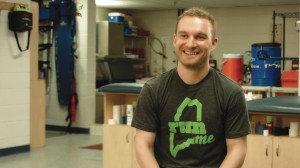
The early scenes of the film show Wieluns’ alarm going off at 4:31 in the morning for a ten-mile workout before running to the office (he would run home in the evenings as well). On the weekends, he drove the White Mountains in New Hampshire for runs of 20 or 30 miles on hiking trails. He monitored his progress closely in weekly posts on Facebook and in interviews with the filmmakers. He continued training with a local trail running club, but this time, the presence of a film crew kept him on-task.
“I used to be a high school athlete but I’m in no way a particularly gifted runner,” he says. “That added pressure of a film crew filming me helped focus my training. The more I wrote about it and the more I kept track of it, it forced me to focus on what I needed to do to get ready for race day. ”
Training for 100 miles did not fit easily into Wieluns’ daily schedule. He was working 50 to 60 hour workweeks and his wife was writing her dissertation for her doctorate. On top of that, their baby daughter was born in February 2013. Training, he says, was a delicate balancing act.
“It’s a huge time commitment and I think the more you do it the more your training adjusts to what the rest of your life is,” he says.
Race day
The day of the race, while Wieluns confronted 100 miles of grueling dirt roads and hills, the filmmakers faced a challenge of their own. Peters and Mooney had recruited a team of 20 volunteers – many were friends and alumni from Colby Sawyer – and stationed them throughout the course as best they could with cameras. Communication between aid stations on the course was done via ham radio as the course has minimal cell reception. In addition to hardly any ability to communicate between the camera crews, they weren’t familiar with the course since the map is kept secret.
“We basically said, ‘These are the shots we need. Good luck, we’ll see you in 30 hours,” Peters recalls. During the race, the directors traveled between checkpoints with Wielun’s support crew.
The directors also put a GoPro camera on Zak for the first 30 miles of the race. A friend running alongside him as a pacer wore a camera pointed in Zak’s direction.
During the race, Wieluns says the presence of the cameras kept him focused, just like they did during his training.
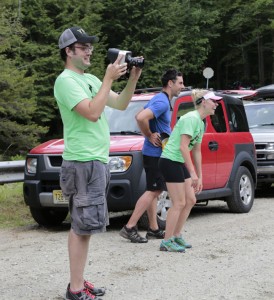
In the world of distance running, many runners describe “the wall,” a point where the body and mind reach a seemingly insurmountable level of pain and exhaustion. But in a race as long as 100 miles, Wieluns describes three circles of running hell to endure: the wall, the pit and the abyss. Mentally overcoming these obstacles, he says, is a key to success.
“Part of what I’ve learned is while there are the low moments where your stomach may feel bad, you may get a twinge in the leg or your quads may be on fire, if you can mentally battle through that, it will pass. Somehow you’re going to be able to continue going if you can keep mentally focused on what you need to do,” he says.
As he kept running, the film crew continued to record.
“It was a little bit surreal,” he says of all the extra attention. “I had to bear-down because it was a little bit of added pressure.”
By the end of the race, his feet were on fire and he was having difficulty thinking clearly. But he had made it, and waiting for him at the finish line was his family, friends and parents. Best of all was his time: 21 hours and 45 minutes — far faster than he had expected and far ahead of his pace in 2012.
Past the finish line
With so much physical and mental torment, there was also the chance that Wieluns might not finish. In 2013, intense heat and humidity caused 40 percent of runners to drop out.
The only thing they could do, Peters says, was wait and see.
“One of the risks of making a film like this is you have no idea what to expect when the film is done,” he says. “The story evolves as you film it. One of the appeals of documentary film making is you have to leap into the abyss and hope that there’s something worth watching at the bottom.”
By the end of the race, Mooney and Peters had collected well over 100 hours worth of footage. Over the next year, they produced a 100-minute documentary – the longest film they have produced.
Mooney and Peters released their film with a small screening this past May at their alma mater. Now, they’ve gone public and are submitting the film to festivals.
While the film focuses on running, the two hope it will have a broad appeal.
“Everyone goes through those things where you have to balance your life,” Peters says. “Obviously, this was one of those huge life goals for him and if he threw in the towel after three attempts he probably wouldn’t have been very happy with himself. To complete it one of the most important things for him, so I think in that sense even non-runners can identify with the process of training; to do something and seeing it through to the end.”
After screenings at film festivals in Vermont and New Hampshire, “100: Head/Heart/Feet” will move to festivals in Las Vegas, Nv., Madison, Wi.; Lubbock, Texas and even Mexico for the Festival Sayulita. Hammer & Saw are planning a national tour and have scheduled screenings from Hartford, Conn. to Juneau, Alaska.
As for Wieluns, he returned to the Vermont 100 this past July and Mooney ran with him for the last 12 miles as a pacer. This year, he cut one hour and 42 minutes off of his time.
Currently, he’s resting and looking forward to the snowshoe-racing season and the US national qualifiers.
As for his next 100-miler, he says he’s ready for a different race.
“I’ve done Vermont for four years now and I like to keep things fresh and set new goals,” he says. “There are a lot of races out there that I’d like to try, but I want to keep a balance. Maybe we can make a family vacation out of it.”

